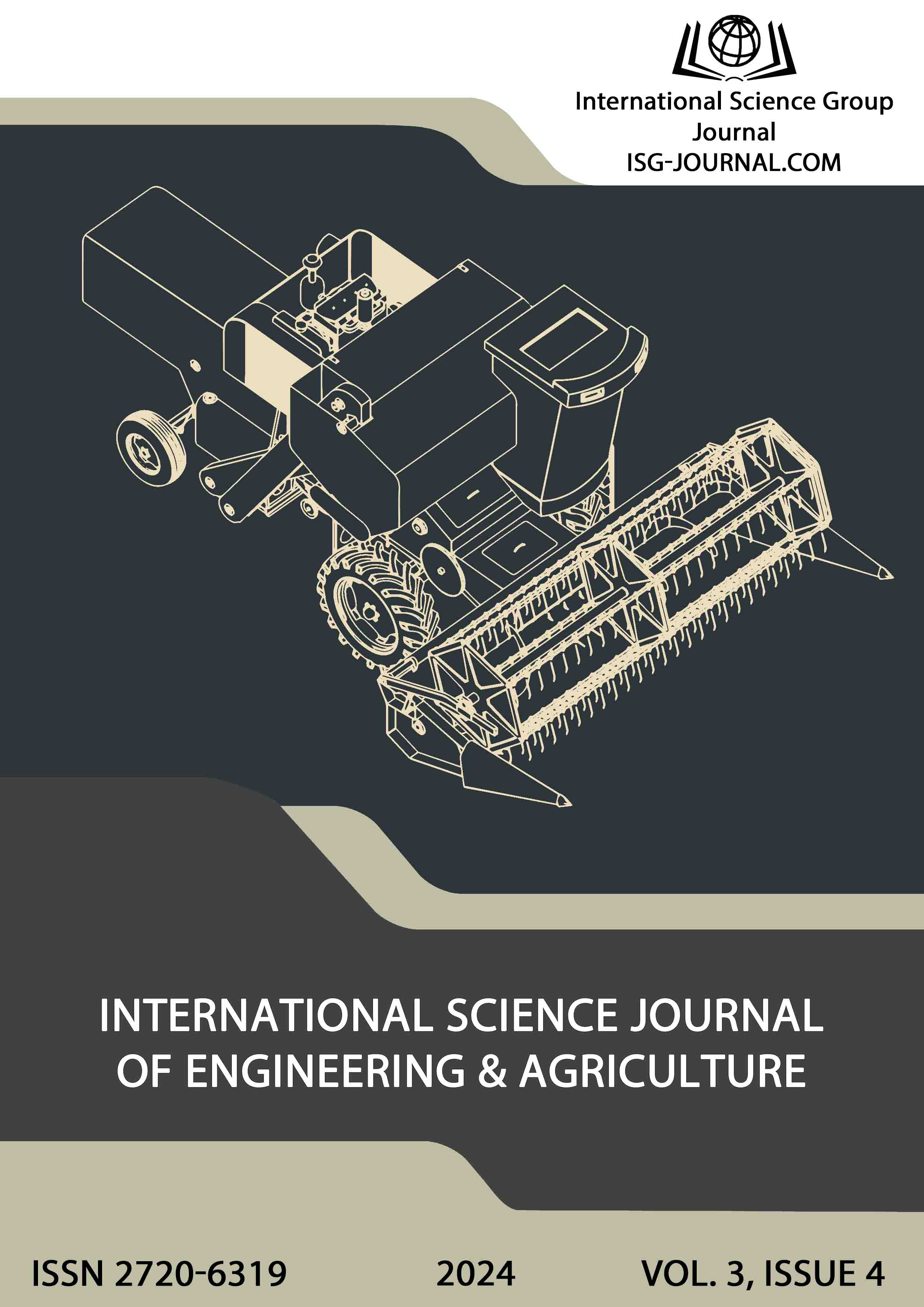Analysis of methods for determining the granulometric composition of slurry at the output of a ball mill using ultrasonic methods and enhancing efficiency by considering changes in slurry concentration
DOI:
https://doi.org/10.46299/j.isjea.20240304.07Keywords:
granulometric composition; slurry; ultrasound; beneficiation; ball millAbstract
Ore grinding at a mining beneficiation plant, using ball mills, is a crucial stage in the production of ferrous metals. This process is resource-intensive and influences the quality of further processing. Implementing modern information technologies for decision-making automation during repairs and management helps enhance equipment utilization efficiency and reduce economic costs. Currently, there exist ultrasonic methods for investigating the granulometric composition of slurry at the output of a ball mill, as described in several scientific studies. However, despite their promise, these methods have not seen widespread use due to a number of issues that need to be addressed for further research. One such method is determining the granulometric composition of slurry at the output of a ball mill. The ultrasonic method of slurry investigation is based on analyzing the reflection and scattering of ultrasonic waves of different frequencies as they pass through the suspension. This method enables real-time data acquisition on particle size distribution, providing precise and timely control over the grinding process. Among the advantages of the method are high sensitivity to changes in granulometric composition and the ability for continuous monitoring. Implementing ultrasonic systems for slurry control facilitates optimization of ball mill operation modes, reduces energy consumption, and improves product quality. However, there are several issues limiting the widespread adoption of the ultrasonic method. Key issues include the high cost of equipment and the need for regular calibration. Additionally, measurement accuracy may be compromised by the presence of air bubbles in the slurry, variations in composition and concentration of the solid phase, and potential sensor contamination. Interpreting the obtained data requires highly skilled personnel and specialized software. Further research aims to address these technical issues, reduce system costs, and integrate with other automated process control systems.References
Папушин, Ю. Л., Смирнов, В. О., & Білецький, В. С. (2006). Дослідження корисних копалин на збагачуваність. Донецьк: "Східний видавничий дім". – С. 138-139.
Моркун, В. С., Дворников, В. А., & Касаткина, И. В. (2016). Анализ методов определения гранулометрического состава твердой фазы пульпы с использованием объемных ультразвуковых волн. Вісник Криворізького національного університету, 41, 49-54.
Губин, Г. Г., Ярош, Т. П., & Скляр, Л. В. (2016). Обобщение и анализ возможности использования ультразвуковых колебаний при переработке полезных ископаемых. Збагачення корисних копалин: Наук.-техн. зб., 62(103), 132-143.
Поркуян, О. В., & Сотникова, Т. Г. (2010). Ультразвуковой метод контроля гранулометрического состава железорудной пульпы. Вост.-Европ. журн. передовых технологий, 4(4), 66-69.
Кондратець, В. О., & Мацуй, А. М. (2017). Динамічна корекція розрідження пульпи та завантаження кульового млина при зміні крупності руди. Вісник Криворізького національного університету, 45, 189-195.
Поркуян, О. В., & Сотникова, Т. Г. (2010). Комбинированный метод определения относительного содержания магнетита в твердой фазе железорудной пульпы. Вестник Нац. техн. ун-та "ХПИ": сб. науч. тр. Темат. вып.: Электроэнергетика и преобразовательная техника, 12, 29-36.
Тимошенко, М. А. (2016). Аналіз сучасних методів автоматизованого керування процесами збагачення залізної руди. Систем. технології, 5, 102-113.
Швець, Д. В. (2014). Розробка системи стабілізації масової долі заліза магнітного у зливі класифікатора та дослідження можливості автоматизації процесу подрібнення залізної руди та підготовки її до збагачення. Якість мінеральної сировини, 252-264.
Губін, Г. В., Моркун, В. С., Олійник, Т. А., Тронь, В. В., & Равінська, В. О. (2018). Моделювання впливу ультразвукового сигналу в середовищі для розробки нової технології рудо підготовки залізорудної сировини. Збагачення корисних копалин: Наук.-техн. зб., 69(110), 95-109.
Губін, Г. В., Моркун, В. С., Олійник, Т. А., Тронь, В. В., & Равінська, В. О. (2018). Підвищення якості товарної продукції за рахунок використання високоенергетичного ультразвуку. Вісник Криворізького національного університету, 46, 169-174.
Кондратець, В. О., & Мацуй, А. М. (2017). Динамічна корекція розрідження пульпи та завантаження кульового млина при зміні крупності руди. Вісн. Криворіз. нац. ун-ту: зб. наук. пр., 45, 189-195.
Morkun, V. Optimization of high-energy ultrasound source parameters for cavitation disintegration of ore floccules before floatation [Text] / V. Morkun, V. Tron, V. Ravinskaia // IEEE International Young Scientists Forum on Applied Physics and Engineering. – 2017. – P. 96-99.
Моркун В.С., Поркуян О.В. Ультразвуковые поверхностные волны Лэмба и Лява в измерительных системах. – Кривой Рог: Изд. центр КТУ, 2006.- 261 с.
Хавский Н.Н., Смирнов Ю.Р., Бершицкий А.Н. Современное состояние использования ультразвука в процессах обогащения и гидрометаллургии цветных металлов. – М.: Цветметинформация, 1971.
Келлер О.К., Картыш Г.С., Лубяницкий Г.Д. Ультразвуковая очистка. – Л.: Машиностроение, 1977. – 184 с.
Downloads
Published
How to Cite
Issue
Section
License
Copyright (c) 2024 Vadym Kharlamenko, Vitalii Lazariev

This work is licensed under a Creative Commons Attribution 4.0 International License.






